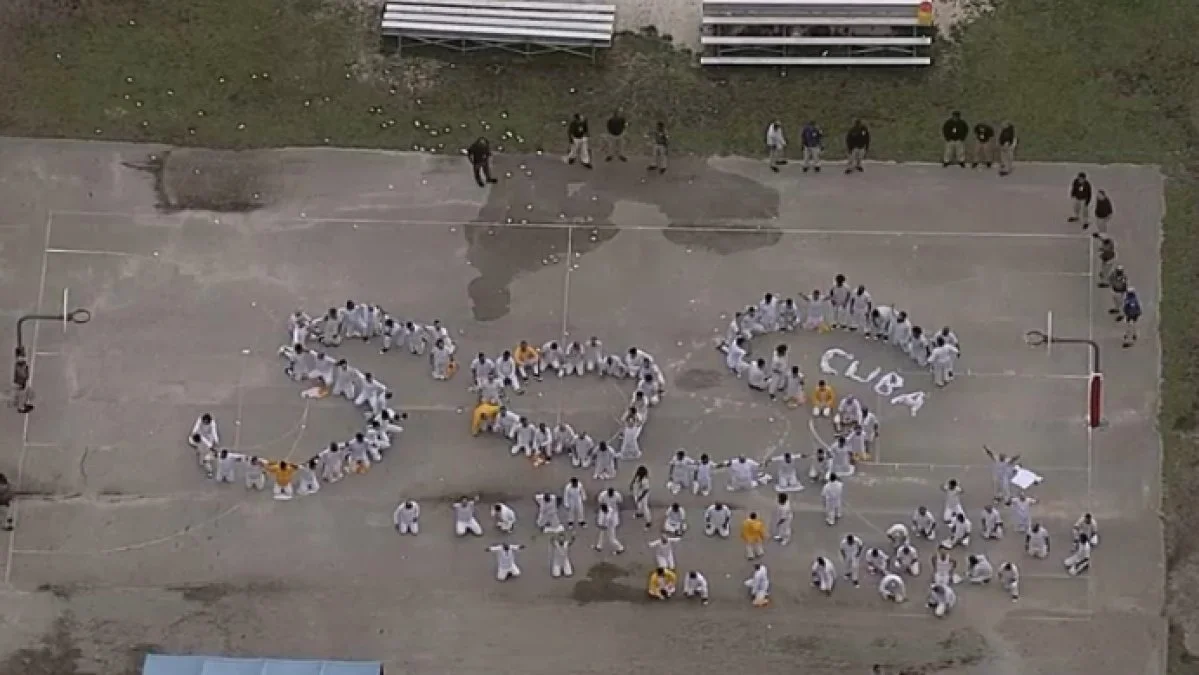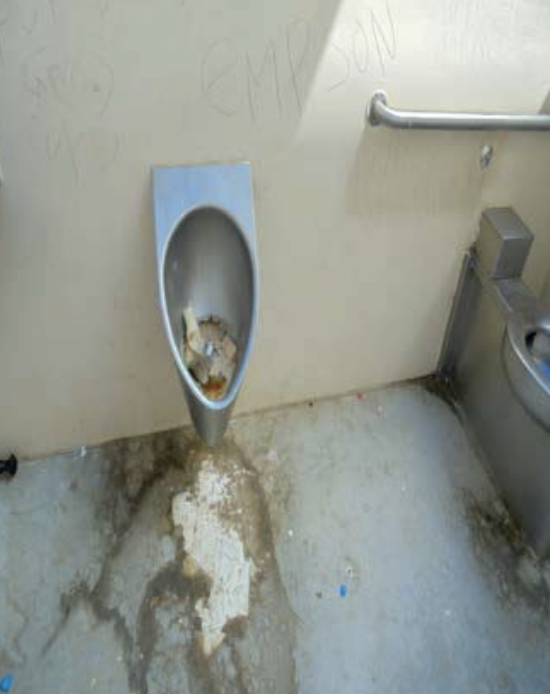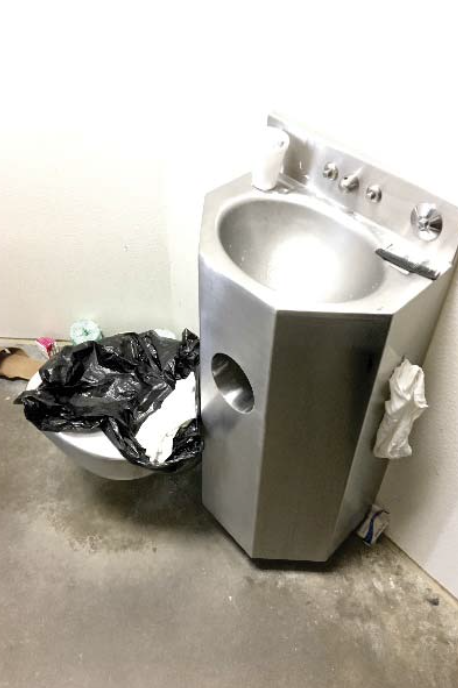Conditions in ICE Detention
Conditions in ICE detention centers are dire.
Detainees at the Krome Detention Center in Miami, Florida and the Bluebonnet Detention Facility in Anson, Texas spell out “S-O-S” with their bodies.
Detention centers are at extreme overcapacity.
59,760
people in ICE detention
140%
capacity (mid-September)
16 detainees have died in ICE custody since January 2025. Two from suicide.
“I mean people die in ICE custody, people die in county jail, people die in state prisons…we have the highest detention standards in the industry,”
—Tom Homan, Acting Director of ICE
On June 30th, 2025 in response to a reporter’s request for comment on the death of 75-year-old Isidro Perez in ICE custody.
Detention centers are frequently understaffed. The recent explosion in detainee populations has left facility staff overworked and stretched thin.
A shortage of open beds at overcrowded facilities forces many detainees to sleep on hard concrete floors for weeks at a time.
Meals are sparse and lack nutritional value. Food might be served spoiled. Mealtimes are inconsistent. Detainees in some facilities report not receiving dinner until as late as midnight. More and more are going hungry.
Detainees are squeezed into overcrowded holding cells. Sanitation and hygiene are neglected. Toilets don’t flush. Detainees routinely go days without an opportunity to shower or change into clean clothes. These conditions in such close quarters allows disease to spread rapidly.
Medical care and prescriptions are frequently withheld. Detainees often report that their complaints of injury and illness are ignored by staff. They receive delayed emergency care and inadequate treatment from detention center healthcare providers.
Language barriers and a lack of translators makes it especially difficult for detainees to communicate their needs and concerns with staff. They might face punishment for failing to comply with orders they can’t understand.
Although ICE detention is officially non-punitive, facility staff regularly reprimand detainees and enforce order using methods that amount to torture. Detainees are arbitrarily placed into solitary confinement for extended periods of time. ICE is required to report usage of solitary confinement, though record-keeping is neglected.
Operational standards and procedures for detention centers are not mandated by law but set instead by ICE regulations. ICE standards are not uniformly applied and compliance is rarely enforced.
Inadequate medical care
ICE detainees frequently report their requests for medical care and complaints of illness being ignored or inadequately treated.
On September 21, 2025, a 39-year-old DACA recipient named Ismael Ayala-Uribe died in ICE custody at the Adelanto processing center in San Bernardino County, California. His family told the Los Angeles Times that Ismael complained to Adelanto staff that he felt ill after two-weeks in ICE detention. He quickly developed a fever and was observed shaking and in pain by staff. Ismael was brought to the detention center’s infirmary but was returned to his cell after an hour and a half. Three days later he was rushed to a nearby hospital where was to receive surgery to remove an abscess.







